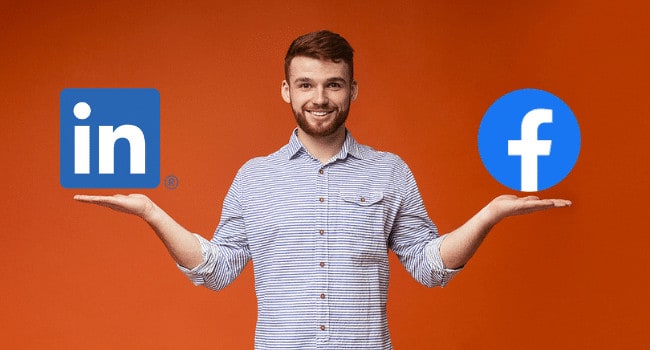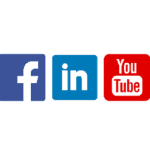For many organisations the question of LinkedIn vs Facebook for B2B marketing hasn’t even been considered a question. LinkedIn is the business network and Facebook is just for personal use, so LinkedIn is the only option most B2B organisations consider.
This of course overlooks the fact that business people are also people!
In this post we’ll outline the different B2B social media Use Cases and and share which platform is best for each application.
Note: I won’t be looking the the extensive recruiter functionality included in LinkedIn. This post is focused on B2B marketing.
- Demographics and Usage for LinkedIn vs Facebook
- LinkedIn and Facebook: Targeting Capabilities for B2B Marketing
- Use Case: B2B Prospecting / Data Enhancement – Winner: LinkedIn
- Use Case: B2B Branding and Promotion – Winner: Tied
- Use Case: Communicating Directly with B2B Prospects – Winner: Facebook
- Use Case: Advertising to Generate B2B Leads – Winner: It Depends
Demographics and Usage for LinkedIn vs Facebook
It’s generally accepted that LinkedIn is the business social network and Facebook is the personal social network but let’s look at the social media statistics to confirm our assumptions.
Membership
In 2020, 80% of Australians reported they used Facebook but only 27% said they used LinkedIn.
Of course self reporting is not always accurate and LinkedIn’s advertising platform shows it can reach 11 million people or about 56% of the Australian population.
Facebook claims a 71% audience reach. So the difference between the two platforms is smaller than might be expected.
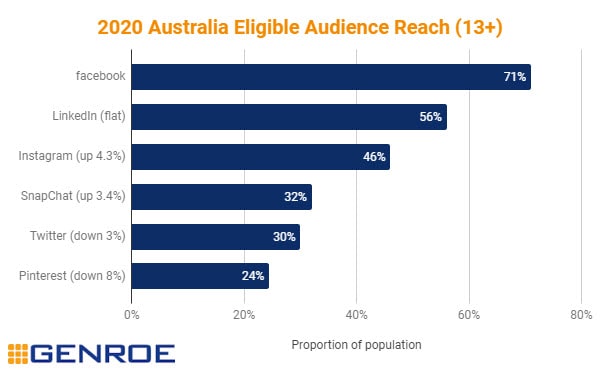
Dwell Time
On average Facebook users spend almost twice as long on the site each day but it might surprise you how long some people spend on LinkedIn.
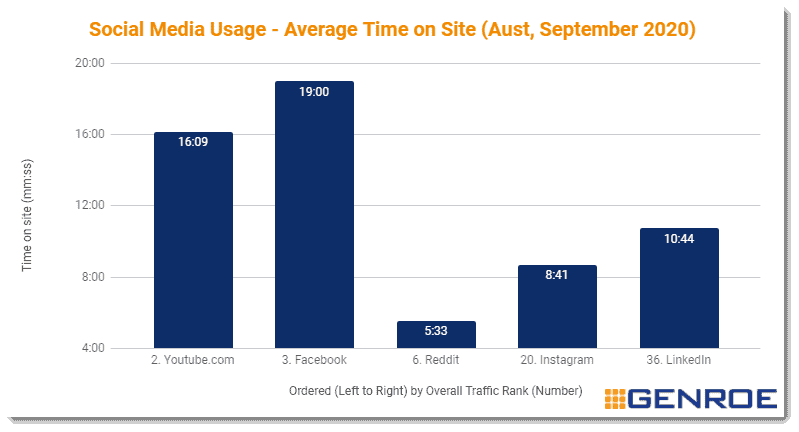
Membership Types
Facebook has only one membership level: free.
Your membership can be connected to many different features, groups, company pages etc.
On the other hand LinkedIn has a free and several paid plans based on your business goals:
- Free
- Sales Navigator Professional
- Sales Navigator Team
The Sales Navigator versions allow users to find people out of their network (not directly linked to them), use simple lead saving, direct messaging (InMail) and even CRM sync of data.
LinkedIn and Facebook: Targeting Capabilities for B2B Marketing
Both LinkedIn and Facebook offer a wealth of options for targeting your B2B advertisements, but they each have their unique strengths. Understanding these differences is crucial to leveraging each platform effectively.
When choosing between LinkedIn and Facebook, consider the unique advantages of each platform’s targeting capabilities. LinkedIn’s professional data can be especially valuable for reaching specific roles within industries, while Facebook’s broader demographic and behavioural data can help identify potential leads you might not reach otherwise.
LinkedIn’s Targeting Strengths
LinkedIn is renowned for its professional networking environment, making it a powerful tool for B2B marketers. One of the most valuable aspects of LinkedIn’s targeting is its focus on professional data.
Job Title and Function: LinkedIn allows you to target individuals based on their current job title and function, helping you reach decision-makers within organizations.
Industry and Company Size: If you’re aiming for businesses within a specific sector or of a certain size, LinkedIn allows you to refine your targeting based on these parameters.
Skills and Education: LinkedIn’s unique focus on professional development enables targeting based on users’ listed skills and education, which can be useful for more specialized B2B products or services.
Facebook’s Targeting Strengths
While Facebook may be more consumer-oriented, it still offers a robust set of targeting options that B2B marketers can leverage.
Demographics and Interests: Facebook’s demographic and interest-based targeting is comprehensive, allowing marketers to target based on age, gender, location, interests, and more.
Lookalike Audiences: One of Facebook’s standout features is the ability to create Lookalike Audiences. This allows you to target users who are similar to your existing customers, increasing the likelihood of finding high-quality leads.
Behavior and Purchase Intent: Facebook also provides targeting based on user behaviour and indications of purchase intent, which can be particularly useful for identifying potential B2B customers.
Use Case: B2B Prospecting / Data Enhancement – Winner: LinkedIn
In this use case, B2B sales and marketing teams are either discovering new individuals / companies to target or enhancing the information they already have around the individual / company.
While Facebook and LinkedIn both have Company Pages, Facebook Company pages are not linked to employees. LinkedIn actively and clearly links member profiles together around the company profile.
This makes it invaluable for B2B prospecting. Once on the company page, with the right paid membership, you can see everyone at the company, their current title, tenure, history, etc.
Also, when combined with paid memberships or other automation software, e.g. LinkedHelper , LinkedIn allows the user to quickly search for the right companies and contacts within companies to target.
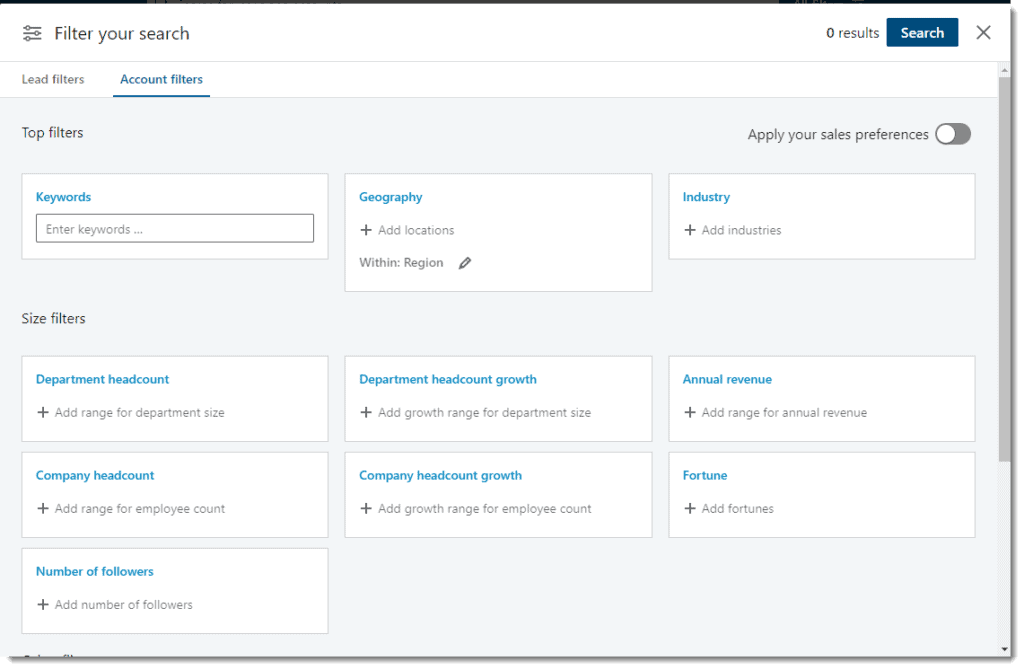
The paid membership options needed for some of this searching are not inexpensive, of the order of $150 per month, but the time saved is immense.
With a Sales Navigator account you can find the job and company details for almost any business contact in a matter of seconds. When it is integrated into your CRM that data is often automatically linked to the CRM record (HubSpot, Salesforce) immediately available.
In addition Sale Navigator users have the ability to
- Save prospects and accounts that are of interest to custom lists
- Receive daily/weekly lists of new prospects that match saved search criteria.
- Get updates on saved lead activity: company and personal posts, job changes, etc
These update notifications make it much easier to outbound prospect at an opportune time or with a relevant offer.
Use Case: B2B Branding and Promotion – Winner: Tied
Both platforms provide a similar set of branding and promotion features:
- Company pages
- Groups: public and private
- Posts, comments, likes, etc.
- Promoted posts (a.k.a advertising)
The details of most of these features are very similar.
Facebook includes a reviews function but other than that the B2B branding opportunities presented by each network are comparable.
Notably, both platforms have de-rated organic post traction for company information to the point where it’s basically “pay to play”, i.e. if you want your posts to be seen by prospects you have to pay for promoted posts.
Sure, there are a few cases of posts that go viral, but getting your content in front of your prospects in a planned and repeatable way is no longer possible without paying.
Use Case: Communicating Directly with B2B Prospects – Winner: Facebook
While most of the branding features are very similar, there are some important differences in the messaging apps.
Facebook Messenger is:
- Free and, basically, unlimited to use
- Widely accepted
- Open access
- Can be hooked directly to web pages for “contact us” use
- Can be incorporated into Chatbots and other automation tools
- Can be integrated into CRM platforms like HubSpot
- Two way: once someone sends your business a Messenger message it’s a two way conversation so it’s similar to receiving an email from them.
LinkedIn InMail is:
- Paid and quite limited, maxing out at just 30 InMails per month for Sales Navigator
- Limited to just LinkedIn
The fact that Messenger is the second largest messaging platform in the world and that it’s so easy to integrate into existing platforms means that, overall, Facebook wins this Use Case.
Use Case: Advertising to Generate B2B Leads – Winner: It Depends
In the advertising stakes, both platforms provide similar features and functionality but they diverge in the detail.
Campaign Types – Winner: Tie
Both platforms allow advertising to drive brand awareness, familiarise prospects with your logo design , capture leads and drive traffic to your website.
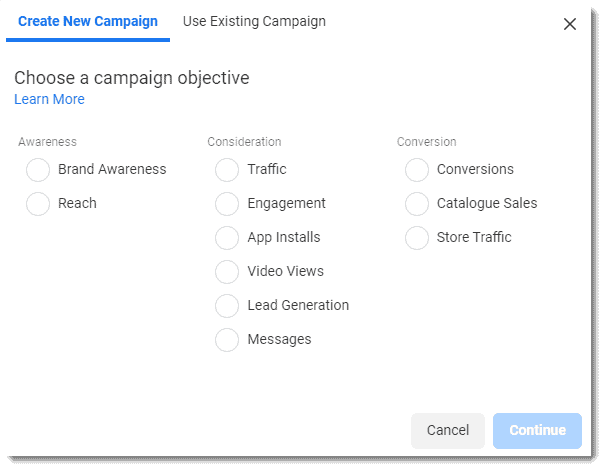
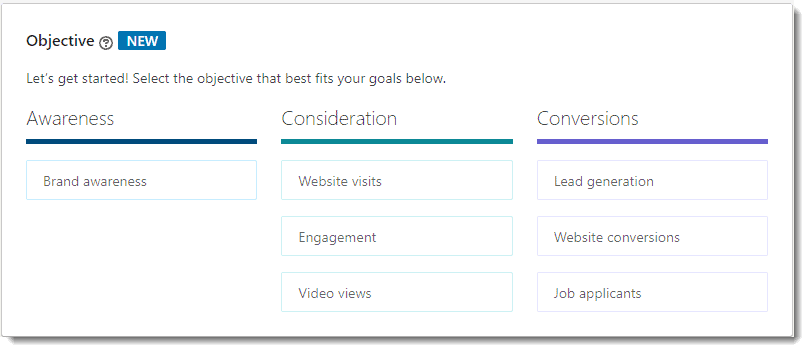
Audience Selection – Winner: LinkedIn
Here again the platforms are similar: advertisers can re-target visitors to their websites, people that are similar to existing contacts (“look-a-like” audiences), people that have engaged with their posts and on-site pages.
However, because LinkedIn also has access to their audience’s professional profile and employer, advertisers can dial in their company and prospect audiences exactly.
Using the LinkedIn target audience feature, advertisers can exactly target the industry, size of company, employee level, etc.
If you want to put your lead generation post in front of senior health and safety managers at West Australian mining companies with more than 500 employees: LinkedIn will let you do it.
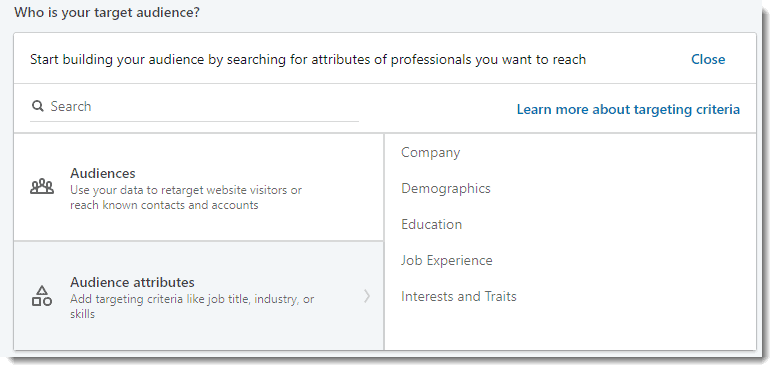
In addition LinkedIn provide a range of pre-built audiences.
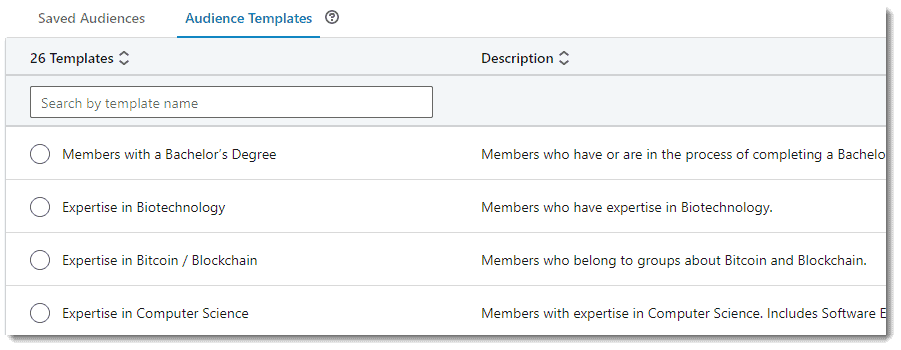
Cost Per Click: Winner – Facebook
When it comes to B2B PPC advertising the cost per click, CPM (cost per thousand impressions) or even cost per lead the two platforms diverge again.
Generally, Facebook costs less for any equivalent action (click, lead, view, etc) than the same action in LinkedIn.
Here you can see that LinkedIn cost per click is almost 10 times as much as Facebook.
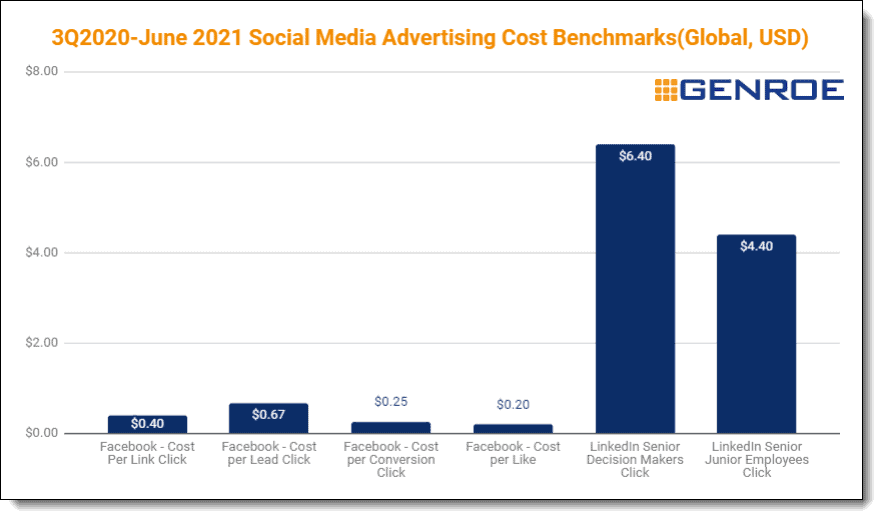
From a real world perspective, when using Facebook and Linkedin Lead Generation campaigns we have seen these sorts of prices:
- LinkedIn: Cost per Lead of AUD15-AUD100
- Facebook: Cost Per Lead of AUD5-AUD15
Acquisition Cost – Winner: ??
Of course cost per click or even cost per lead is not everything. You need to include lead quality in your calculations.
The real question is: what is your cost per acquisition?
Each platform will show people your advertisement but only with LinkedIn can you ensure that those people are the right people, in the right company. This difference is extremely important.
Facebook leads might be cheaper but they are also less qualified.
In practice you might need to generate three, four or more times as many leads from Facebook advertising to close the same number of sales as needed with LinkedIn leads.
This doesn’t mean LinkedIn is better, or Facebook better. It just means you need to test both and determine the break even point between:
- Lower cost, higher volume, lower qualified Facebook leads; and
- Higher cost, lower volume, higher qualified LinkedIn leads.
